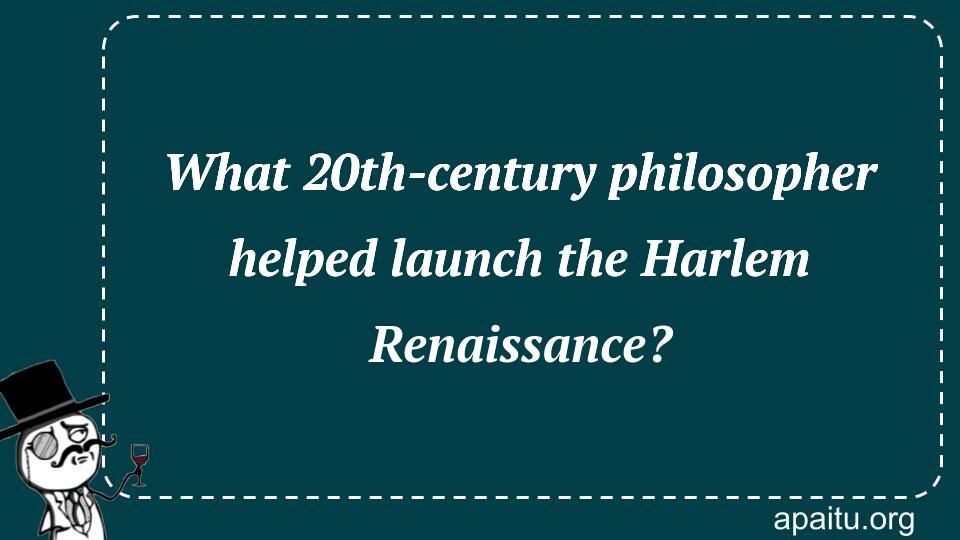Question
Here is the question : WHAT 20TH-CENTURY PHILOSOPHER HELPED LAUNCH THE HARLEM RENAISSANCE?
Option
Here is the option for the question :
- Alain LeRoy Locke
- W.E.B. Du Bois
- William Fontaine
- Hubert Harrison
The Answer:
And, the answer for the the question is :
Explanation:
‘The New Negro,’ an anthology of Black artists’ creative works, was produced in 1925 by Alain LeRoy Locke. The Harlem Renaissance, a period of African American art, music, literature, theatre, and ideas, was launched by this book. In addition, Locke encouraged and mentored Black artists, such as Zora Neale Hurston, who rose to prominence in the Harlem Renaissance movement.

The Harlem Renaissance, a vibrant cultural and intellectual movement that emerged in the 1920s, left an indelible mark on American history. At the heart of this transformative era was Alain Leroy Locke, a 20th-century philosopher whose contributions helped launch and shape the Harlem Renaissance. Locke’s intellectual prowess, commitment to African-American art and culture, and advocacy for social change played a pivotal role in fostering a renaissance of creativity and empowerment.
Born on September 13, 1885, in Philadelphia, Alain Locke exhibited exceptional academic abilities from an early age. He pursued higher education at Harvard University, where he studied philosophy and became the first African American to be awarded a Rhodes Scholarship. This prestigious scholarship allowed him to further his studies at the University of Oxford, where he immersed himself in the intellectual and cultural milieu of Europe.
Locke’s experiences in Europe profoundly influenced his worldview and ignited his passion for African-American culture. He recognized the need to challenge prevailing stereotypes and promote a more nuanced understanding of African-American identity and artistic expression. Inspired by the concept of the New Negro, which emphasized self-assertion and self-expression, Locke sought to create a platform for African-American artists and thinkers to showcase their talents and challenge societal norms.
Upon his return to the United States, Locke accepted a teaching position at Howard University, a historically black institution in Washington, D.C. It was during his time at Howard that Locke became a central figure in the Harlem Renaissance. Through his lectures, writings, and mentorship, he encouraged young African-American artists, writers, and musicians to embrace their cultural heritage and explore themes of racial identity and social justice in their work.
In 1925, Locke edited and published a seminal anthology titled “The New Negro: An Interpretation.” This groundbreaking collection of essays, poems, and fiction featured the works of prominent African-American writers such as Langston Hughes, Zora Neale Hurston, and Countee Cullen. “The New Negro” served as a manifesto for the Harlem Renaissance, showcasing the richness and diversity of African-American artistic expression and challenging the prevailing notion of black inferiority.
Locke’s role as an intellectual leader extended beyond the literary realm. He actively promoted African-American visual arts, supporting and advocating for artists such as Aaron Douglas, Augusta Savage, and Jacob Lawrence. Locke recognized the power of art as a means of social commentary and cultural liberation, and he tirelessly worked to ensure that African-American artists received recognition and opportunities for their work.
Locke was a staunch advocate for social and political change. He believed in the power of education to uplift